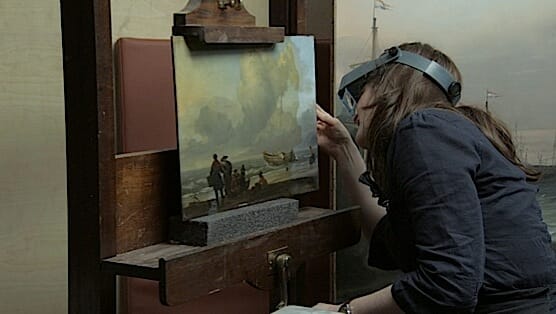National Gallery

Endlessly curious and preternaturally patient, Frederick Wiseman makes documentaries that can run from 90 minutes to six hours, devoting each film to an individual institution—a state legislature, a school for the blind, a boxing gym, the University of California at Berkeley—and coming back with an observational, arm’s-length portrait that feels definitive without ever straining for significance. Now 84, he’s his own institution, reliably producing distinctive films with his trademark restraint. (He never includes interviews with any of his subjects and doesn’t worry too much about shaping his material into some sort of conventional narrative.) Never nominated for an Oscar but a hero to countless nonfiction filmmakers, Wiseman boasts one of the great bodies of work in contemporary cinema—and he’s still going.
His latest, National Gallery, could be filed alongside his other documentaries about the arts, such as La Danse, Ballet or Crazy Horse. But this study of London’s titular fine-arts museum fits into Wiseman’s oeuvre more broadly by opening a door into a specialized world, examining its inner workings quietly but thoroughly. Filmed over 12 weeks in early 2012, National Gallery comprehensively chronicles the tour guides, visitors, custodians, scholars and museum directors who comprise the heart and soul of the National Gallery. But over the movie’s three-hour running time, Wiseman also reveals something deeper about what museums—and art itself—mean to the public.
Beyond all else, National Gallery is a tribute to competence, intelligence and enthusiasm. Rather than speaking to the people we see in his film, Wiseman lets us watch them work, whether it’s the men and women who meticulously design the frames that will hold the priceless paintings or the executives who have to map out next year’s budget and determine if more staff cuts will be necessary. Resisting any attempt to ennoble his subjects—as usual for him, National Gallery features no score—Wiseman presents his little ecosystem with a minimum of fuss, but the interactions he records are consistently stimulating.
If National Gallery is but the most recent of his movies to track the behind-the-scenes economic woes that threaten so many important institutions, the film is also a provocative treatise on how we talk about culture. Much of the documentary is devoted to art historians and tour guides lecturing to classes and visitors about the museum’s collection of paintings, which includes works by Rembrandt, da Vinci, Turner and Van Gogh. The collection is gorgeous, but these experts’ discernments offer new levels of insight and consideration into what we’re seeing. As a result, National Gallery enlivens an old cliché, making centuries-old paintings come alive. And yet, as one tour guide instructs, none of these interpretations is necessarily “correct”: It’s merely another way of processing art whose intricacies and mysteries have bewitched viewers for generations.
-

-

-

-

-

-

-

-

-

-

-

-

-

-

-

-

-

-

-

-

-

-

-

-

-

-

-

-

-

-

-

-

-

-

-

-

-

-

-

-








































